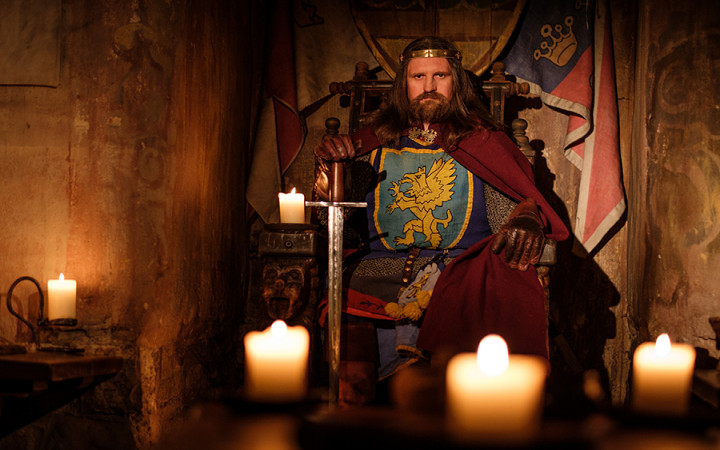Today’s Wonder of the Day was inspired by EASHAN. EASHAN Wonders, “Medieval times, how would it be like back then?” Thanks for WONDERing with us, EASHAN!
Fast forward to the future — you're an adult and your dream has finally come true. The time machine that was invented several years before has finally come down in price and can now be purchased at your local electronics store. Christmas is right around the corner and you know what will be at the top of your wish list for Santa.
In the meantime, you have to decide where — and WHEN — you'll go to once you get your time machine. While those questions might be tough for some people, they're not too difficult for you. You've always been a big fan of castles and knights in shining armor, so it's off to the medieval times for you!
The medieval period — also called the Middle Ages — describes Europe during the roughly 1000-year time period between the fall of Rome in 476 A.D. and the start of the Renaissance in the 14th century. The Renaissance marked a rebirth of arts and culture that celebrated the classics of ancient Greece and Rome.
Renaissance-era historians tended to dismiss the century after the fall of Rome as a dark age without significant accomplishments in the arts or science. Calling it the Middle Ages or even the Dark Ages overlooked the many advances that took place during these years. This is why many modern scholars refer to this time as the medieval period instead.
After the fall of Rome, Europeans were no longer united by a single government. Instead, the Roman Catholic Church became the most powerful institution during the medieval period. The kings and leaders that arose during this time became powerful by creating alliances with and protecting the church.
While the Roman Catholic Church gained power and wealth throughout Europe, Islam began to grow in power and influence throughout the Middle East after the death of the prophet Muhammad in 632 A.D. Muslim armies conquered and united large parts of the Middle East.
Large cities, such as Cairo, Baghdad, and Damascus, became cultural centers filled with artists, writers, philosophers, and scientists. Many modern technologies got their start as basic inventions during this time, including cameras, soap, wind energy, flying machines, and even the numeral system we still use today.
The Roman Catholic Church's response to the rise of Islam was a series of military expeditions, known as Crusades, meant to expel Muslims from the Holy Lands of the Middle East. These Crusades lasted for hundreds of years and cost thousands upon thousands of lives on both sides.
Although neither side "won" the Crusades, they were successful in uniting Europeans behind the Roman Catholic Church. The Crusades also brought many of the advances of Islamic societies to the European continent, helping to set the stage for the coming Renaissance.
Although Renaissance-era thinkers often dismissed the medieval period as devoid of artistic value, the period's contributions to both art and architecture are still on full display in the stained glass and incredible architecture found in structures, such as cathedrals, monasteries, and churches, which still stand to this day. Some of the most famous Gothic-style architecture and religious art still revered today, including frescoes, mosaics, and paintings, date to the medieval period.
In addition to grand cathedrals, the medieval period also saw the construction of many grand castles. These grand homes grew up out of the feudal system that existed in rural Europe during the medieval period. Kings granted pieces of land to noblemen and bishops, who in turn granted the right to work the land to peasants.
The feudalism system also gave rise to the many legends we know today that revolve around knights in shining armor and damsels in distress. Whether these legends hold any truth or are mostly fantasy we may never know, as any facts upon which they're based were likely lost to history hundreds of years ago. In fact, scholars still debate whether there was ever a real King Arthur!





